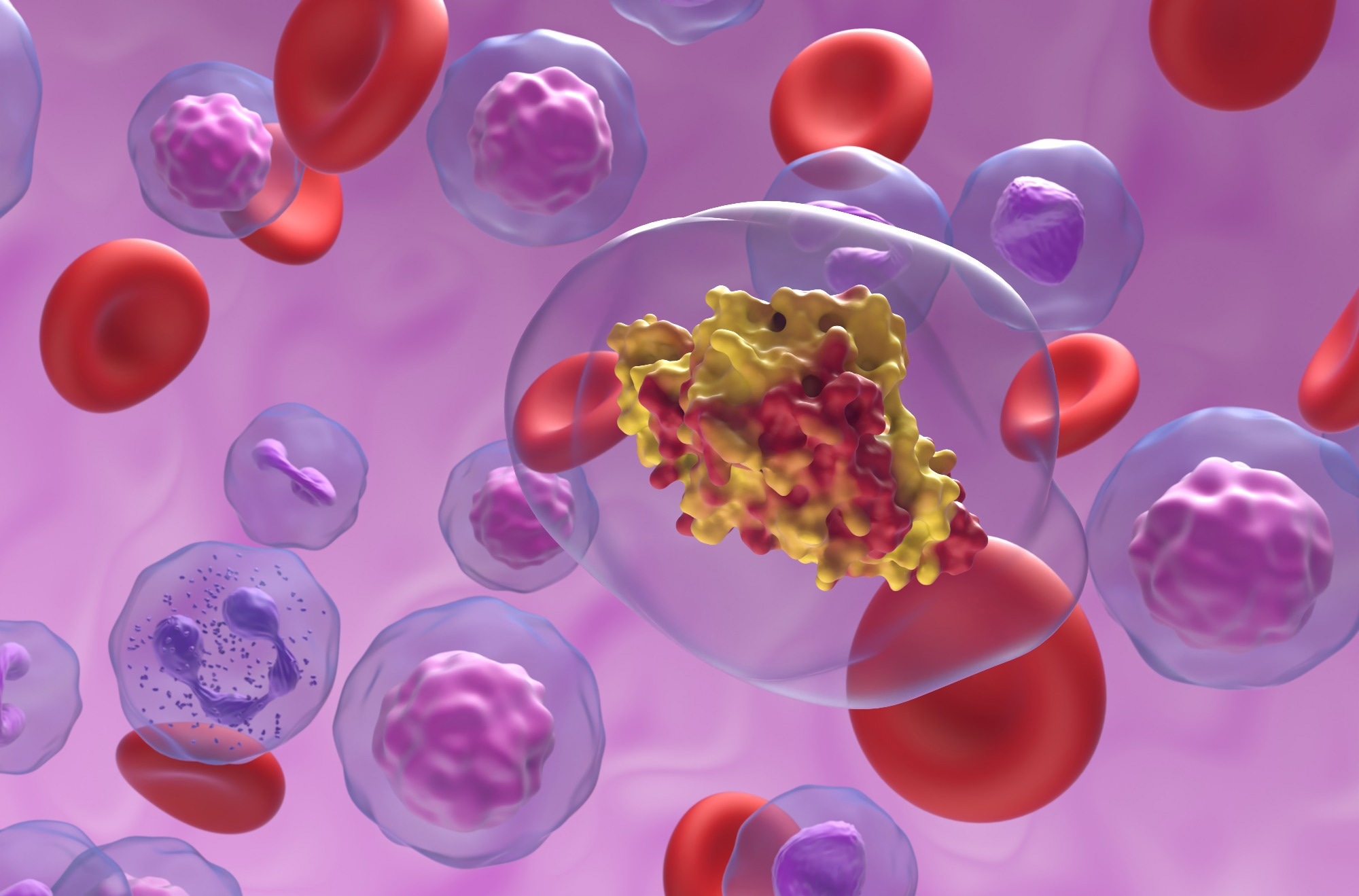Discover how CKMT2 controls energy balance and mitochondrial health in skeletal muscles, revealing a new link between metabolism and type 2 diabetes management.
Study: Decreased mitochondrial creatine kinase 2 impairs skeletal muscle mitochondrial function independently of insulin in type 2 diabetes. Image Credit: Nemes Laszlo / Shutterstock.com
A recent Science Translational Medicine study reveals that creatine kinase M2 (CKMT2) mediates mitochondrial dysfunction associated with type 2 diabetes.
The role of creatine kinases in type 2 diabetes
Altered energy metabolism occurs in type 2 diabetic patients with insulin resistance due to limited intracellular storage and transport of adenosine triphosphate (ATP). Under these conditions, high-energy demanding tissues like skeletal muscle and the brain utilize creatine kinases to convert creatine into phosphocreatine.
Creatine serves as an energy shuttle due to its ability to store and transport ATP across the cell membrane. Creatine metabolism is associated with various pathophysiological functions, including immune responses to macrophages.
In fact, impaired phosphocreatine metabolism in white adipose tissue is associated with the development of a proinflammatory environment found in obese individuals. In men, increased levels of circulating plasma creatine indicate elevated risks of type 2 diabetes.
Several studies have shown that changes in the expression and activity of the creatine transporter proteins, as well as the interconversion of creatine into phosphocreatine, influence creatine metabolism.
Typically, creatine kinases are tissue-specific with unique intracellular localization. For example, the creatine kinase M-type isoenzyme is located in the cytosol of the heart and skeletal muscle, whereas sarcomeric mitochondrial CKMT2 is found in the mitochondrial intermembrane space.
To rapidly hydrolyze ATP into adenosine diphosphate (ADP) to phosphorylate creatine, CKMT2 functionally co-localizes with the adenine nucleotide translocator (ANT). Although some studies have indicated that CKMT2 is a vital regulator of mitochondrial respiration and oxidative phosphorylation (OXPHOS) in skeletal muscle, the functional role of CKMT2 in skeletal muscle metabolism in type 2 diabetes remains unclear.
About the study
The current study evaluates determines any modification in CKMT2 content and creatine metabolism occurs in the skeletal muscle of men with type 2 diabetes. To this end, creatine metabolite levels were estimated, along with the expression of related genes from plasma and biopsy samples.
The role of CKMT2 was also assessed using high-fat diet-fed mouse models. Furthermore, the effects of Ckmt2 expression on mitochondrial metabolism were determined in C2C12 myotubes.
After clinical screening, 27 men with normal glucose tolerance and 25 men with type 2 diabetes were recruited. Participants with diabetes were treated with glucose-lowering drugs, including metformin and/or sulfonylurea. All medications were taken after skeletal muscle biopsy samples were collected.
Study findings
Higher circulating fasting creatine levels were observed in plasma samples of men with type 2 diabetes and negatively correlated with the expression of the creatine transporter solute carrier family 6 member 8 (SLC6A8) in skeletal muscles. Reduced phosphocreatine levels were also observed, along with elevated intramuscular creatine content, both of which correlated with CKMT2 expression in skeletal muscles.
Decreased skeletal muscle CKMT2 messenger ribonucleic acid (mRNA) levels were associated with higher post-oral glucose tolerance test (OGTT) circulating insulin in men with normal glucose tolerance and higher hemoglobin A1c (HbA1c) in men with type 2 diabetes.
CKMT2 expression was positively correlated with hip diameter in men with normal glucose tolerance. Except for glycine, which was reduced in men with type 2 diabetes, other creatine precursors remained unaltered in plasma. Body mass index (BMI) values did not influence the creatine/phosphocreatine or gene expression in skeletal muscle.
Male mice were fed a high-fat diet for eight weeks, followed by treatment with phosphate-buffered saline (PBS), creatine, or the creatine analog β-guanidinopropionic acid (β-GPA) for the last two weeks of the diet. Although the high-fat diet increased mouse BMI, fasting glucose and glucose tolerance were unaffected in these mice. Decreased basal and insulin-stimulated glucose transport was observed in the soleus muscle of mice consuming a high-fat diet as compared to those on a chow diet.
Mice treated with β-GPA exhibited improved basal glucose transport in the soleus muscle. Creatine treatments partially reverted the high-fat diet-induced downregulation of CKMT2 mRNA. Furthermore, creatine treatment upregulated genes encoding nitric oxide synthase 1 (NOS1), catalase (Cat), superoxide dismutase 1 (SOD1), nitric oxide synthase 3 (NOS3), hexokinase 2 (HK2), vascular endothelial growth factor (VEGF), and pyruvate dehydrogenase kinase 4 (PDK4).
Intact C2C12 myotubes were assessed through high-resolution respirometry assays in an Oxygraph-2k. To this end, CKMT2 silencing led to an overall reduction in mitochondrial respiration capacity, as well as lower levels of hydrogen peroxide in myotubes and reduced mitochondrial membrane potential.
CKMT2 overexpression prevented lipid-induced metabolic stress in C2C12 myotubes, as demonstrated by oleate and palmitate-induced downregulation of peroxisome proliferator-activated receptor γ, coactivator 1 α (Ppargc1a). This overexpression in skeletal muscle enhanced mitochondrial respiration and attenuated p38 mitogen-activated protein kinase (MAPK) activation in high-fat diet-fed mice.
Physical activity increases CKMT2 content, as twenty-five days of voluntary wheel running increased CKMT2 in supercomplexes independently of mitochondrial biogenesis.
Conclusions
The current study provides evidence of the role of CKMT2 in skeletal muscle mitochondrial homeostasis. Reduced CKMT2 expression can alleviate prominent features of skeletal muscle dysfunction in patients with type 2 diabetes, including impaired mitochondrial function, reduced glucose metabolism, and increased reactive oxygen species (ROS) production.
Journal reference:
- Rizo-Roca, D., Guimaraes, D. S. P. S. F., Pendergrast L. A.. et al. (2024) Decreased mitochondrial creatine kinase 2 impairs skeletal muscle mitochondrial function independently of insulin in type 2 diabetes. Science Translated Medicine. doi:10.1126/scitranslmed.ado3022.
Source link : News-Medica

